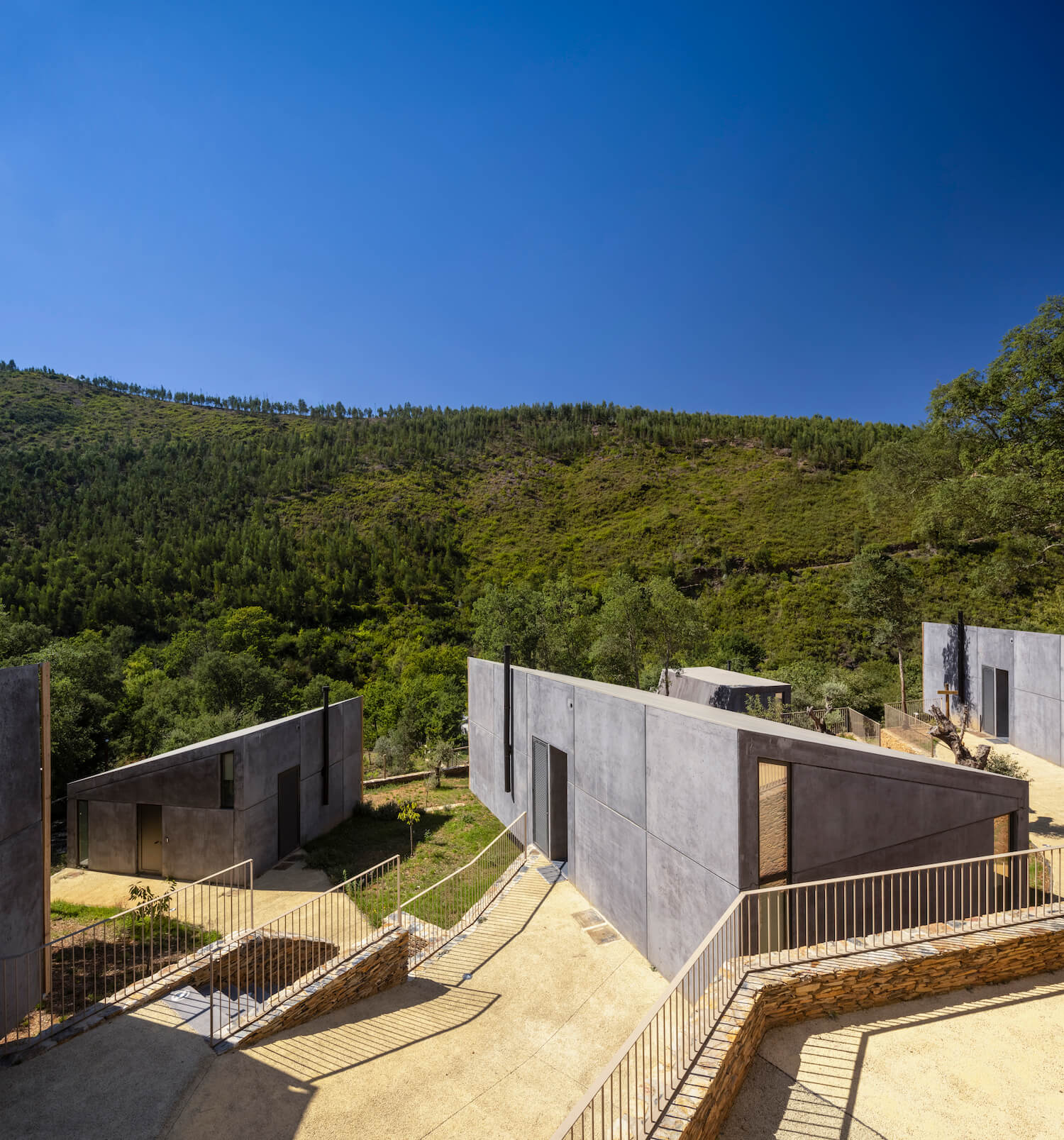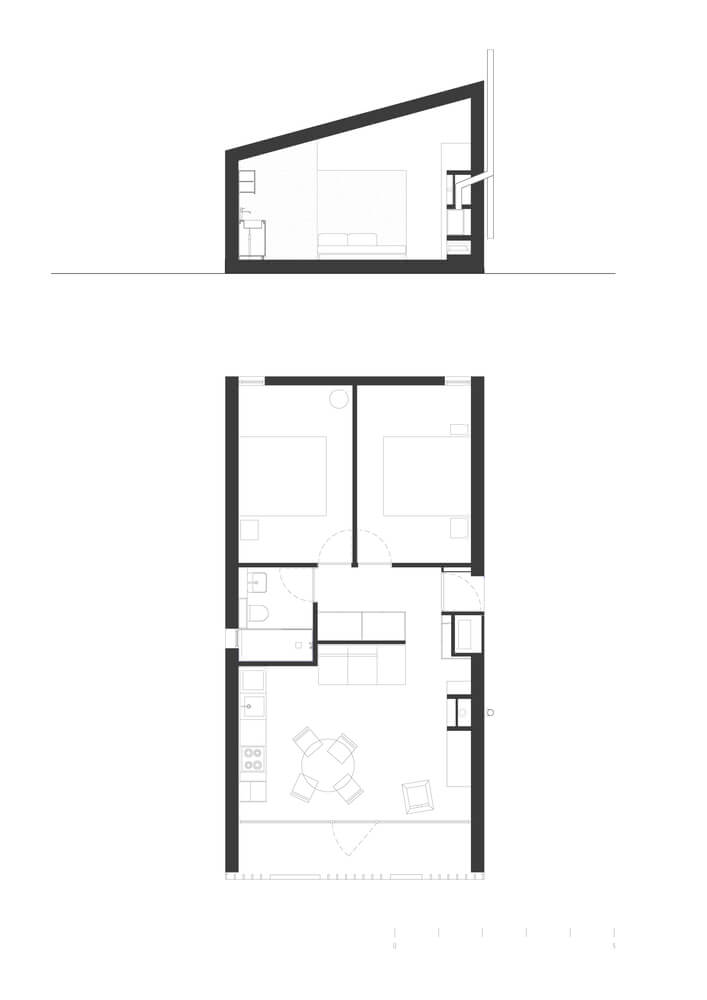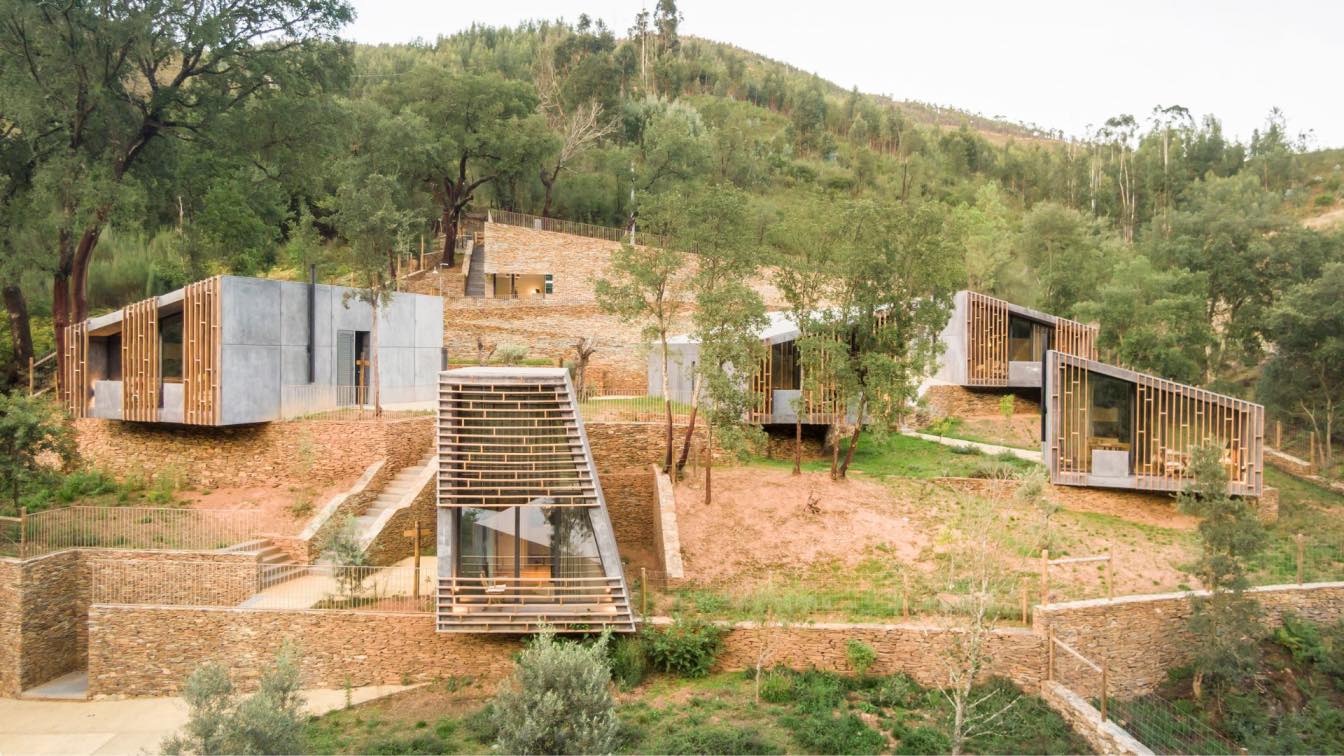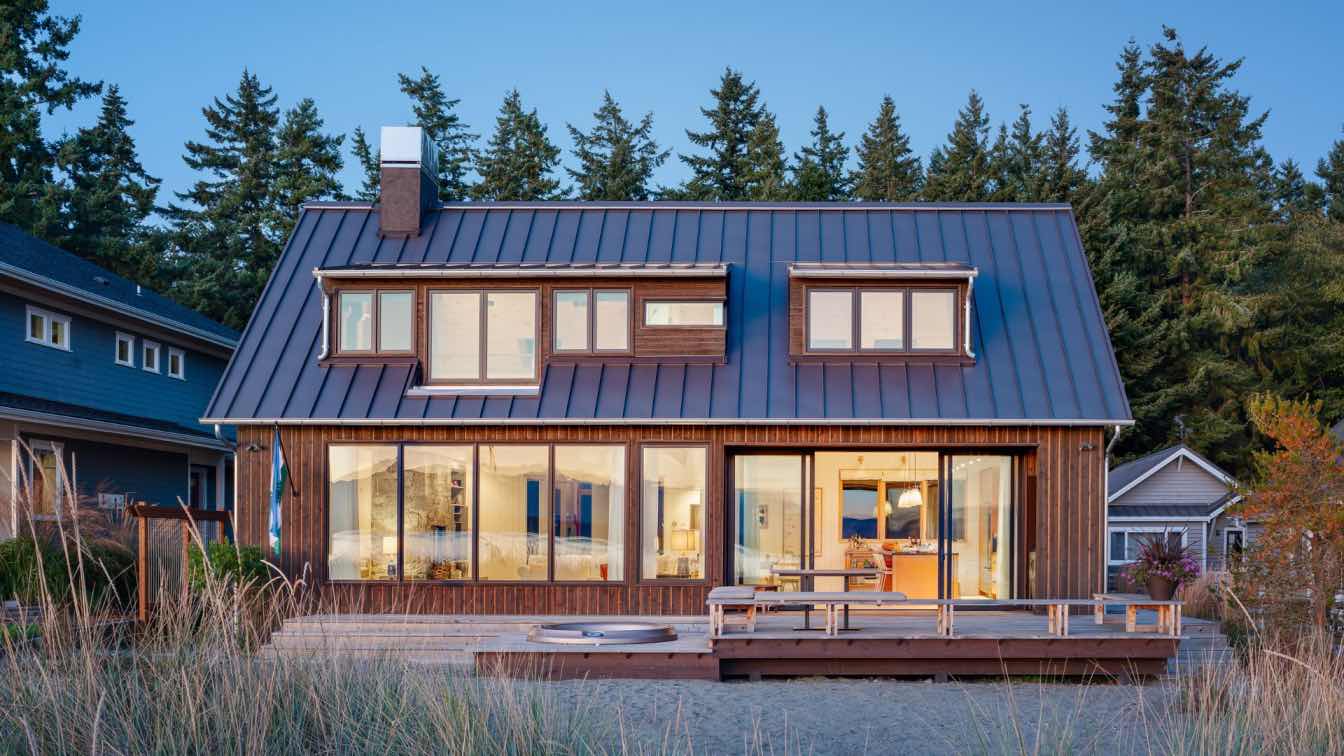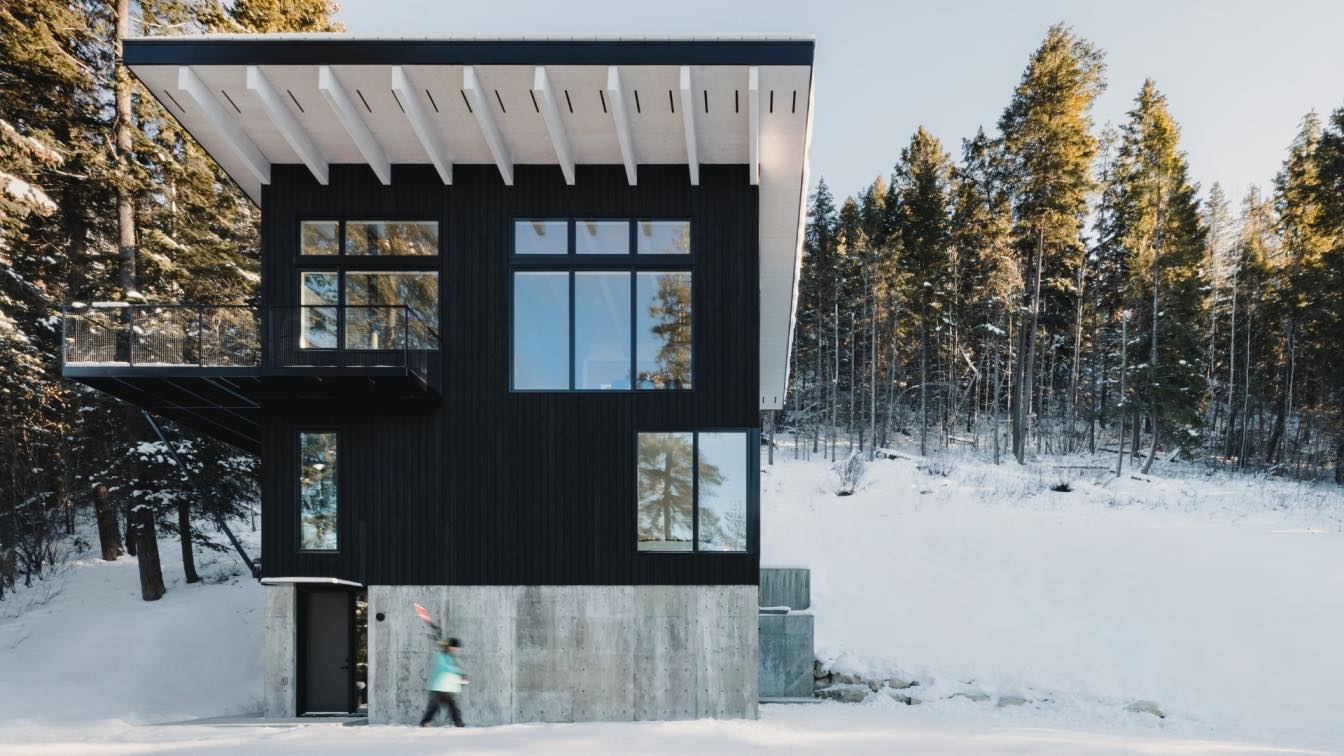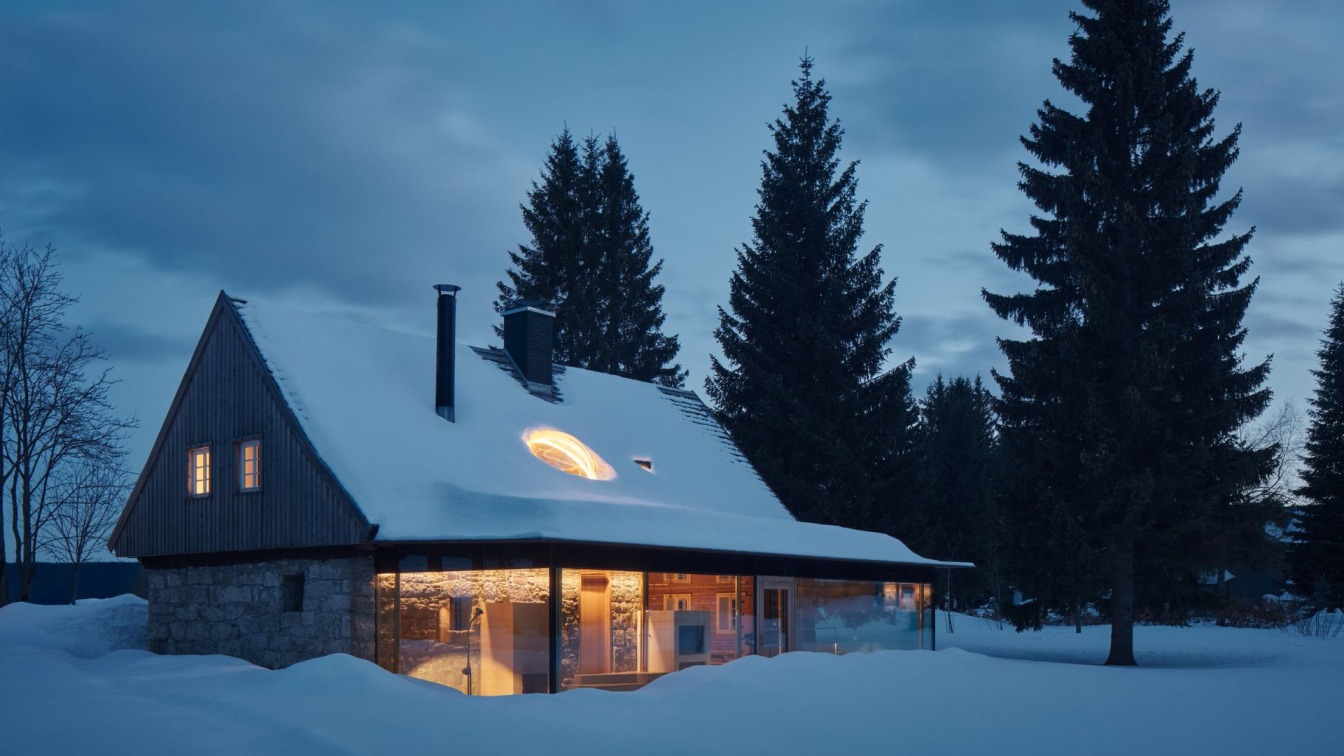SUMMARY: Considering the roughness and the remoteness of this plot it would be difficult (and extremely expensive) to assemble construction yards for a traditional building. Thus, in this case, resorting to prefabricated structures was not just a choice, but the only efficient option we had to simplify the building process within such conditions.
The initial commission was to distribute several touristic rooms over the terrain. However, we proposed small houses - not just rooms - so that some of them would be able to work as full-time houses rather than tourism units. Mixing these two different programs (tourism + housing) we ensure that this complex will not have a seasonal occupation, being inhabited during the whole year and not just in the vacation period. This multifunctional approach promotes the intensity of this complex’s occupation, therefore fostering its frequent maintenance and improving the security of the area.
This project was an opportunity to make new experiences within the Gomos building system: in each house, all the technical installations (water, electricity and climatization) were concentrated in just one module and extended to the other models externally. This procedure was standardly repeated in the whole project, accelerating its production/assembly process.
The project is composed of eleven small cabins, including four different typologies, from 28sqm to 58sqm. They are distributed across the plot according to the natural configuration of the terrain, altering it as little as possible. The old stone walls and the existing trees were preserved – the houses were carefully placed around them. Combining this apparently arbitrary positioning with different orientations allowed the houses not to block each other’s views. From the balconies, behind the wooden slats, we can see the forest and, in some cases, the river.

Who was the client, what was the initial brief?
The client was a private investor who purchased this plot due to its natural setting, the existing landscape and the connection with Paiva river.
The initial commission was to distribute several touristic rooms over the terrain. However, we proposed small housing units - not just rooms - so that some of them would be able to work as more permanent housing rather than tourism units. Mixing these two different programs - tourism and housing - we ensure that this complex will be in use throughout the year, not just seasonally in vacation time. This multifunctional approach promotes the intensity of this complex’s occupation, fostering its more frequent maintenance and improving the security of the area.
What were the key challenges?
Apart from the natural conditions of the plot, the roughness and remoteness of its location were also challenging to the development of the project. Moreover, we were anticipating a very difficult building stage if a more traditional construction system was to be used.
This project also presented the added demand of strategically planning in order to reduce construction costs as well as labour requirements. Our solution was to build off-site as much as possible, using our modular system was, according to our view, the most efficient option to simplify the building process within such conditions.
What were the materials and finishings used throughout the living units ?
The program of the project, of cabins in the woods, allowed us to explore the idea of a minimum habitat: the units are composed by a very small space with a living area, a sleeping area, a kitchen and a bathroom. The materiality of the units is similar, consistent with the modular approach of the project.
Concrete, dominant in the building composition, is made evident in the building. Exteriorly it adds a weather-resistant capacity and the same material is also present interiorly, preserving a more industrial feel. The absence of finishing, which was an aesthetical decision in itself is also a cost-effective one.
The hardwood pavements in oak, enhance the physical and visual comfort. Exteriorly, in the recessed balcony, the vertical wood slats introduce some privacy, cast some shade and filter the views towards the forest and the river.

This project was an opportunity to make new experiences within the Gomos building system: each building is composed of a different number of modules, having all the technical installations (water supply, electricity and climatization) concentrated in one of the modules, being extended to the others externally. This procedure was standardly repeated in the whole project, accelerating its production/assembly process. The different prefabricated modules of the building are assembled in situ in its final location, which would solve simultaneously issues of structural order, thermal insulation and external / internal finishings.
Formally, the Paradinha project was also a perfect opportunity to test the formal possibilities of the building system, either in number of modules combined as well as its placement – horizontally or vertically. This helped us understand the adaptability potential of our solution and improve it technically.
What aspects of the project that you would like to highlight?
Even though the project uses as resource a very industrialized solution, we still tried a sensible approach to the needs of the site. The existing stone walls that retained the terraces were determinant to the image of the project and the history of the site. They were refurbished and integrated as part of the new solution. They supported the housing units and help define the new pedestrian circuits.
A deliberate attempt was made to integrate the existing elements, the stone used was all sourced locally and we tried to preserve as much as possible the existing trees – the houses were carefully placed in around them. This apparently arbitrary placement of the units, combined with different orientations allowed the houses to preserve its privacy and not interfere with each other’s views.
























